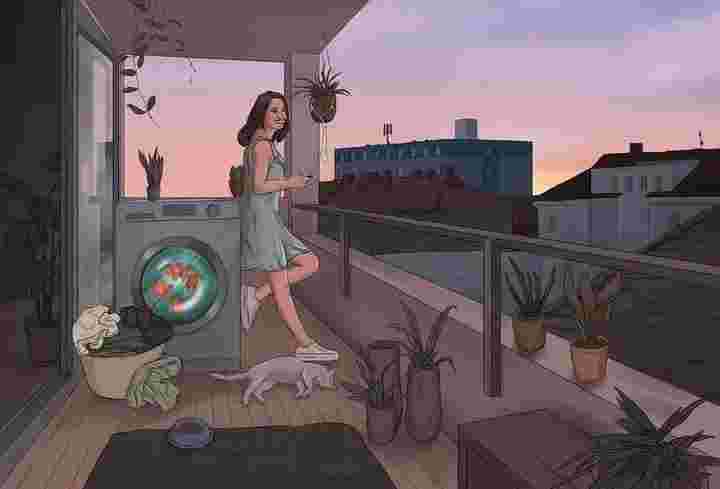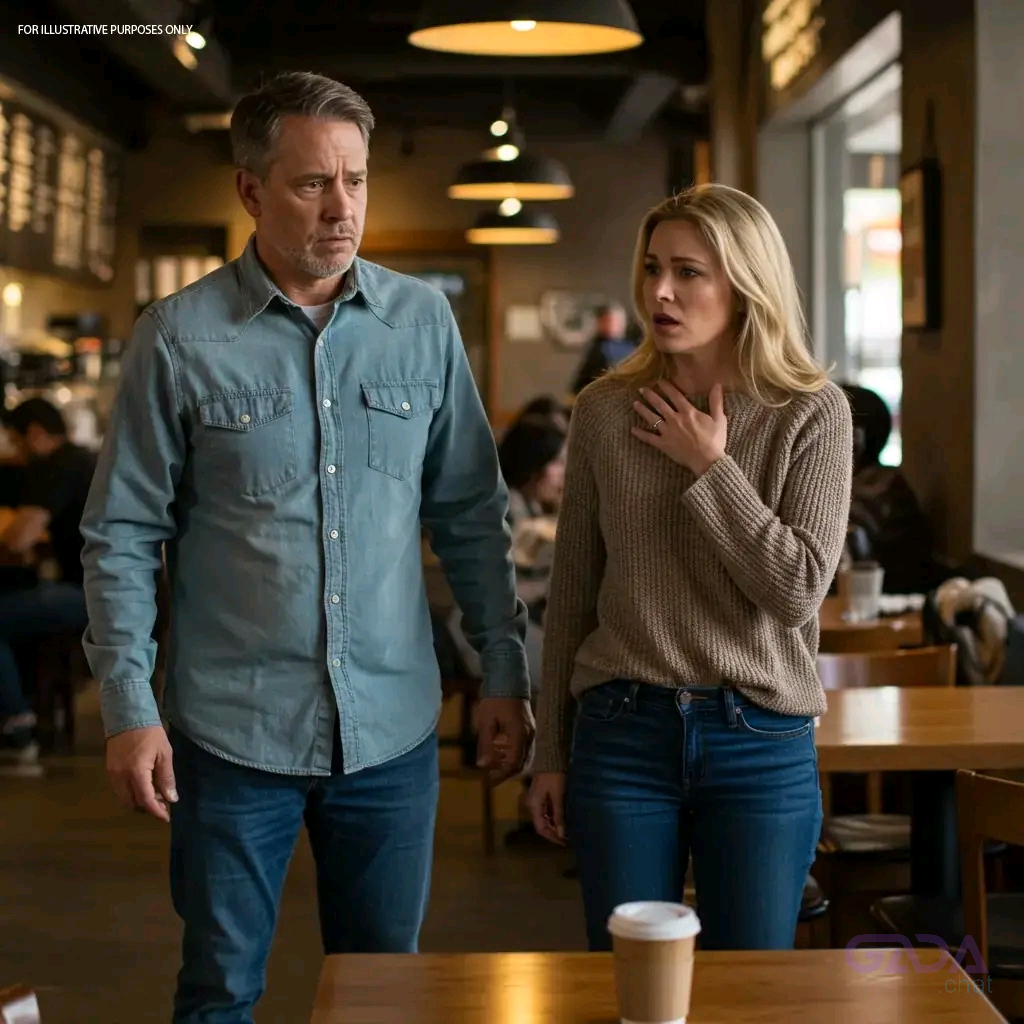AFTER LEAVING HIS WIFE PENNILESS, HE MET HER YEARS LATER—AND COULDN’T BELIEVE HIS EYES
Arthur had always prided himself on being the master of his own destiny. Even during his college years, he commanded attention with his sharp business instincts. While his classmates buried themselves in books, Arthur was already immersed in entrepreneurial ventures—flipping cars one week, assembling custom computers the next.
It was during this phase of his life that he met Michelle. Unlike Arthur’s flashy and superficial girlfriends, Michelle was a quiet, hardworking student majoring in foreign languages. Her modesty set her apart, and to Arthur, she was intriguing in a way he hadn’t expected.
He pursued her with charm and persistence. Michelle, dazzled by the attention of the campus’s most popular guy, quickly fell for him.
“You’re so beautiful,” Arthur would say, dismissing her studies with a wave of his hand. “Why waste your time in school? Marry me, and I’ll take care of everything.”
Michelle hesitated. “I want to work as a translator,” she said shyly. “I want to connect with people from all over the world.”
Arthur laughed. “You can practice your languages with my business partners.”
Eventually, she gave in. They married, and life seemed full of promise. Money was never a problem, and soon their first child, Dimka, was born. Michelle embraced motherhood wholeheartedly. When their daughter, Lenochka, arrived a few years later, her days became consumed with caring for two young children.
Michelle once considered hiring a nanny to balance work and parenting, but Arthur shut the idea down. “Kids need their mother,” he insisted.
While Michelle poured herself into raising their family, Arthur threw himself into his business—or so he claimed. He always seemed to have funds for luxury items like a new car or a state-of-the-art TV. Yet when Michelle asked for something as small as a new hairdryer, he’d scoff and say, “The old one works just fine.”
Years passed, and the children grew older. Michelle began to feel an aching loneliness. Arthur’s time at home dwindled, and when he was there, his phone never left his hand. Any suggestion of a date night or family outing was met with a firm “I’m too busy.” Somehow, though, he always found time for his friends.
Then, one day, Arthur dropped a bombshell.
“We need to split up,” he said bluntly. “I’m tired of this family routine. I have my own life to live, and I need my freedom.”
Michelle was stunned. “Split up? What do you mean? What about the kids? What about us?”
“You’re a mother. You’ll figure it out,” Arthur said with a shrug. That same evening, he packed his belongings and left without looking back.
At least he left her the house—but not a single penny to her name.
Michelle’s once-comfortable life fell apart in an instant. Desperate to provide for her children, she scoured the city for work, often leaving Dimma and Lessie with a kind neighbor. Eventually, she landed a job as a cleaner at a shopping mall, but it wasn’t enough. She started working night shifts to make ends meet, and the exhaustion quickly took its toll.
Just when it seemed things couldn’t get any worse, tragedy struck. Michelle received a devastating call from her mother about her beloved grandfather. Overwhelmed by grief, she summoned every ounce of strength to carry on.
When she visited the notary’s office to settle her grandfather’s affairs, she received the surprise of her life. It turned out her grandfather had been quietly investing in company shares for years. He left his entire fortune to Michelle.
Determined to rebuild her life, Michelle used the inheritance wisely. She took professional development courses to re-enter her field and invested part of the money in a small neighborhood café. The café thrived and quickly became a local favorite.
One busy afternoon, Michelle was behind the counter when the chime of the doorbell signaled new guests. She looked up to greet them—and froze.
Standing in the doorway was Arthur, arm in arm with a striking young blonde.
“Good afternoon. What can I get for you?” Michelle asked, her voice calm and professional.
Arthur glanced up from the menu, doing a double take when he recognized her. “Michelle? Are you working here as a waitress?” he asked with thinly veiled smugness.
“Yes, I work here,” she replied evenly. “What would you like to order?”
Arthur smirked. “Two cappuccinos and some croissants. Well, well—how the tables have turned. I assumed you were still scrubbing floors. Guess this is an upgrade, huh?”
The blonde laughed, clearly enjoying the joke.
“Your order will be ready shortly,” Michelle said, turning toward the counter.
When she returned with their drinks and pastries, Arthur couldn’t resist another jab. “You seem to be doing okay. Maybe serving coffee really is your true calling.”
CONTINUE THE STORY IN THE COMMENTS BELOW!
AFTER LEAVING HIS WIFE PENNILESS, HE MET HER YEARS LATER—AND COULDN’T BELIEVE HIS EYES
Arthur had always prided himself on being the master of his own destiny. Even during his college years, he commanded attention with his sharp business instincts. While his classmates buried themselves in books, Arthur was already immersed in entrepreneurial ventures—flipping cars one week, assembling custom computers the next.
It was during this phase of his life that he met Michelle. Unlike Arthur’s flashy and superficial girlfriends, Michelle was a quiet, hardworking student majoring in foreign languages. Her modesty set her apart, and to Arthur, she was intriguing in a way he hadn’t expected.
He pursued her with charm and persistence. Michelle, dazzled by the attention of the campus’s most popular guy, quickly fell for him.
“You’re so beautiful,” Arthur would say, dismissing her studies with a wave of his hand. “Why waste your time in school? Marry me, and I’ll take care of everything.”
Michelle hesitated. “I want to work as a translator,” she said shyly. “I want to connect with people from all over the world.”
Arthur laughed. “You can practice your languages with my business partners.”
Eventually, she gave in. They married, and life seemed full of promise. Money was never a problem, and soon their first child, Dimka, was born. Michelle embraced motherhood wholeheartedly. When their daughter, Lenochka, arrived a few years later, her days became consumed with caring for two young children.
Michelle once considered hiring a nanny to balance work and parenting, but Arthur shut the idea down. “Kids need their mother,” he insisted.
While Michelle poured herself into raising their family, Arthur threw himself into his business—or so he claimed. He always seemed to have funds for luxury items like a new car or a state-of-the-art TV. Yet when Michelle asked for something as small as a new hairdryer, he’d scoff and say, “The old one works just fine.”
Years passed, and the children grew older. Michelle began to feel an aching loneliness. Arthur’s time at home dwindled, and when he was there, his phone never left his hand. Any suggestion of a date night or family outing was met with a firm “I’m too busy.” Somehow, though, he always found time for his friends.
Then, one day, Arthur dropped a bombshell.
“We need to split up,” he said bluntly. “I’m tired of this family routine. I have my own life to live, and I need my freedom.”
Michelle was stunned. “Split up? What do you mean? What about the kids? What about us?”
“You’re a mother. You’ll figure it out,” Arthur said with a shrug. That same evening, he packed his belongings and left without looking back.
At least he left her the house—but not a single penny to her name.
Michelle’s once-comfortable life fell apart in an instant. Desperate to provide for her children, she scoured the city for work, often leaving Dimma and Lessie with a kind neighbor. Eventually, she landed a job as a cleaner at a shopping mall, but it wasn’t enough. She started working night shifts to make ends meet, and the exhaustion quickly took its toll.
Just when it seemed things couldn’t get any worse, tragedy struck. Michelle received a devastating call from her mother about her beloved grandfather. Overwhelmed by grief, she summoned every ounce of strength to carry on.
When she visited the notary’s office to settle her grandfather’s affairs, she received the surprise of her life. It turned out her grandfather had been quietly investing in company shares for years. He left his entire fortune to Michelle.
Determined to rebuild her life, Michelle used the inheritance wisely. She took professional development courses to re-enter her field and invested part of the money in a small neighborhood café. The café thrived and quickly became a local favorite.
One busy afternoon, Michelle was behind the counter when the chime of the doorbell signaled new guests. She looked up to greet them—and froze.
Standing in the doorway was Arthur, arm in arm with a striking young blonde.
“Good afternoon. What can I get for you?” Michelle asked, her voice calm and professional.
Arthur glanced up from the menu, doing a double take when he recognized her. “Michelle? Are you working here as a waitress?” he asked with thinly veiled smugness.
“Yes, I work here,” she replied evenly. “What would you like to order?”
Arthur smirked. “Two cappuccinos and some croissants. Well, well—how the tables have turned. I assumed you were still scrubbing floors. Guess this is an upgrade, huh?”
The blonde laughed, clearly enjoying the joke.
“Your order will be ready shortly,” Michelle said, turning toward the counter.
When she returned with their drinks and pastries, Arthur couldn’t resist another jab. “You seem to be doing okay. Maybe serving coffee really is your true calling.”
CONTINUE THE STORY IN THE COMMENTS BELOW! ⬇️⬇️⬇️








